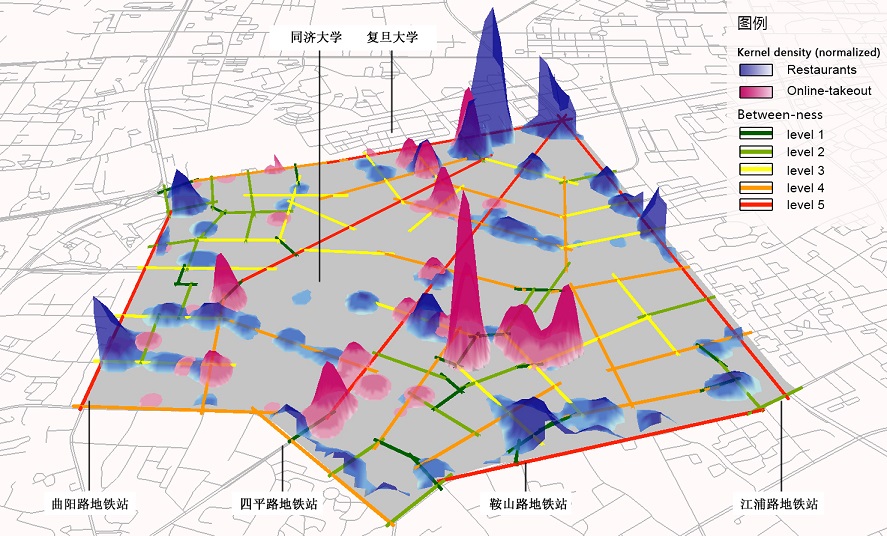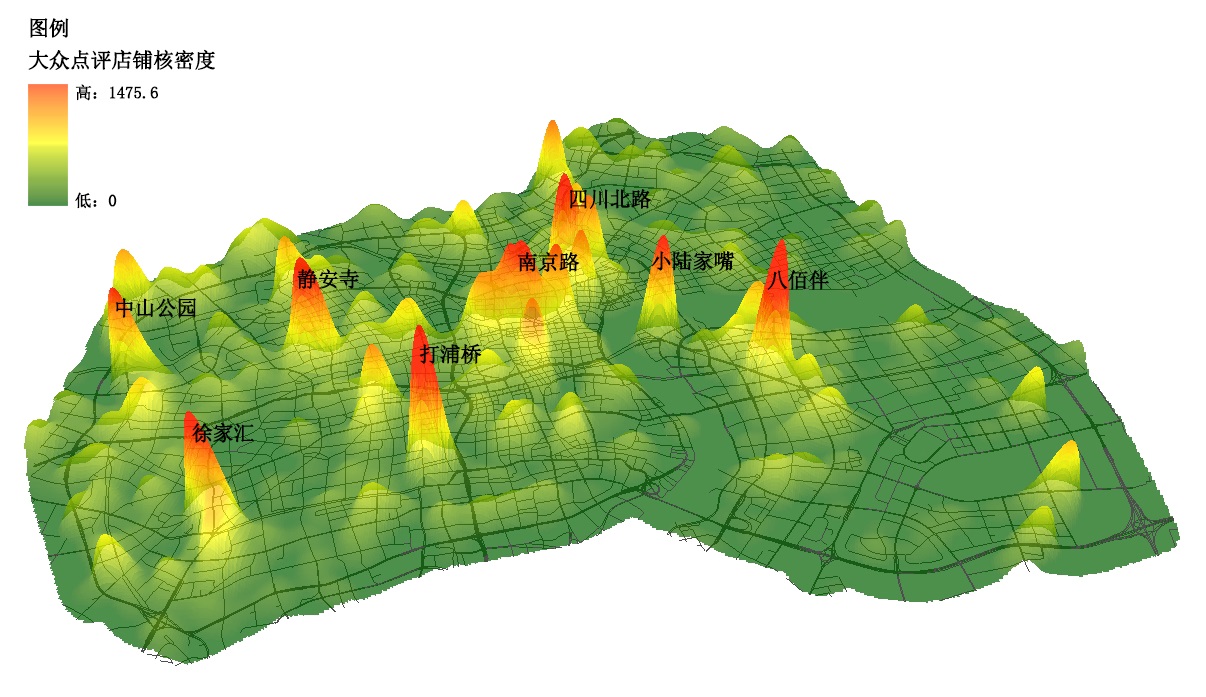
在中国,互联网正在深刻的改变城市空间,其中最典型的代表之一就是外卖。
通过比较基于互联网的外卖和实体店铺的空间分布,我们也许能够一窥这一变化的局部模式。
In China, the Internet is profoundly changing urban space, and a typical example is the takeaway service.
By comparing the spatial distribution of online takeout service and traditional restaurants, we may get a glimpse of the change.
城市尺度的均质化 Decentralization at city-scale
在城市尺度上,可以非常明显的看到相比于实体餐饮店铺,互联网外卖的空间分布要均质的多。
我们还可以计算每平方公里互联网外卖在所有餐饮功能中的占比,并且分析这一比例的空间聚类模式。
结果发现,在整个城市最核心的地区,外卖占比呈现一个整体连片的 “低—低” 分布模式,这意味着随着互联网形成的这一类O2O业态可能会呈现相当均质化的格局。
On the urban scale, the spatial distribution of online takeout is much more decentralized than traditional restaurants.
The spatial clustering analysis showed that the proportion of online takeout stores is significantly low, indicating that this kind of O2O (Online-to-Offline) business driven by the Internet may present a fairly homogeneous pattern.


街区尺度的再集聚 Re-agglomeration at community-scale
更有意思的是,在街区尺度上(封面图),我们还观察到新业态的 “再集聚” 模式。
它们远离了原有的商业中心和邻街店面,在可达性和租金更低的街道上、在居住等地块的内部重新集聚。
这当然可以解释为互联网的直接影响——给予了外卖店铺虚拟的客流入口,使其摆脱了空间可达性的束缚。
同时,“再集聚” 而不是彻底的分散说明,某种集聚动力(例如外卖配送能力的规模效益)也发挥了关键作用。
More interestingly, at the block scale (the cover figure), we observed a “Re-agglomeration” pattern.
The online takeouts are re-clustering on streets with lower accessibility and rents, and within residential plots.
This can be explained by the impact of the Internet, which has freed the takeout stores from the constraints of spatial accessibility. Meanwhile, the “re-agglomeration” rather than outright decentralization also suggests that some agglomeration dynamics (such as economies of scale in delivery) still play a key role.
